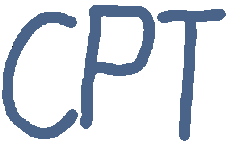
|
Calendar of Physics Talks Vienna
| Some approaches to superstring cosmology |
| Speaker: | Robert Brandenberger (McGill University Montreal) |
| Abstract: | I will review the criteria which a model of the early universe must satisfy in order to make successful contact with current observations.
I will then show that effective field theory inevitably breaks down in the early universe, and that tools from quantum gravity must be used if we are to understand the early stages of the universe. I will then discuss models of early universe cosmology arising from superstring theory, in particular "String Gas Cosmology".
|
| Date: | Tue, 28.03.2023 |
| Time: | 14:00 |
| Duration: | 60 min |
| Location: | Fakultaet fuer Physik, Erwin Schroedinger-HS, Boltzmanngasse 5, 5. Stock |
| Contact: | S. Fredenhagen, D. Grumiller, H. Steinacker, R. Ruzziconi |
| Interpreting Top quark LHC data in the Standard Model Effective Field Theory |
| Speaker: | Ken Mimasu (Kingâs College London) |
| Abstract: | I will review the status and prospects for searching for new physics via the SMEFT, focusing on the importance and impact of top quark data.
I will discuss how top quark data directly and indirectly improves the global new physics reach, showing results from recent global analyses.
I will also highlight some avenues for future improvements in sensitivity, particularly on top quark electroweak interactions, that are currently relatively poorly known.
These include loop-induced effects and the search for high-energy and high-multiplicity processes that exploit the characteristic unitarity-violating behaviour of EFT amplitudes. |
| Date: | Tue, 28.03.2023 |
| Time: | 16:15 |
| Duration: | 60 min |
| Location: | Erwin-Schroedinger Lecture Hall, Faculty of Physics, Boltzmanngasse 5, 5th floor - zoom: https://univienna.zoom.us/j/93342693866?pwd=aUpTR0VJNUhJY2Q0ajdaKzI1YWVBQT09 |
| Contact: | A. Hoang, M. Procura, T. Corbett |
| Polarization transport in optical fibers beyond Rytovâs law |
| Speaker: | Thomas Mieling (Univ. Wien) |
| Abstract: | Within geometrical optics, Rytovâs law states that the polarization vector is FermiâWalker transported along light rays.
A transport law of this kind was experimentally observed in optical fibers â a regime in which ray optics does not suffice,
but wave optics is required. In this talk, I will present a perturbative solution to the full Maxwell equations in arbitrarily bent fibers,
under the sole assumption that the fiberâs radius of curvature is much larger than its diameter.
At leading order, this provides a rigorous derivation of Rytov's law. At next order, one obtains non-trivial dynamics of the electromagnetic
phase and polarization. We discuss potential experiments signatures of of these corrections and compare with similar results on this subject.
This is joint work with Marius Oancea. |
| Date: | Thu, 30.03.2023 |
| Time: | 15:30 |
| Duration: | 60 min |
| Location: | Gravitationsphysik, Seminarraum A, Waehringerstrasse 17, 2nd floor |
| Contact: | P. Chrusciel, D. Fajman |
| Building a realistic neutron star from holography |
| Speaker: | Andreas Schmitt (U. Southampton) |
| Abstract: | Matter in the interior of neutron stars is governed by the strong interaction and very difficult to understand from first principles. Holographic methods, i.e., employing the gauge/string duality to understand properties of strongly coupled matter, have been developed and improved in recent years in the context of dense baryonic and quark matter. I will present the latest results within the holographic Witten-Sakai-Sugimoto model, which has been used to construct the entire neutron star, including the crust, within a single framework. This construction is in accordance with all known astrophysical constraints and yields predictions for future gravitational wave observations. I will also discuss some more theoretical results concerning the phase structure of this model, in particular the quarkyonic phase and the behavior at large isospin chemical potentials.
|
| Date: | Fri, 31.03.2023 |
| Time: | 13:15 |
| Duration: | 60 min |
| Location: | Wiedner Hauptstr. 8-10, 3rd floor, seminar room yellow tower (Sem.R. DB gelb 03) |
| Contact: | Anton Rebhan, TU Wien |
|
